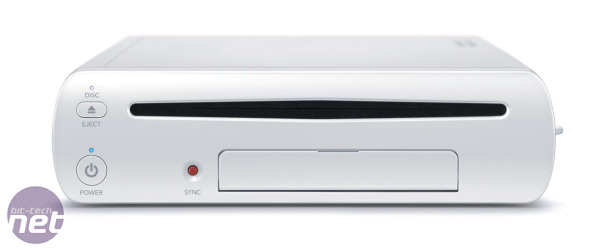Nintendo releases Wii U
In 2012, Nintendo plans to be the first of the three main game console makers to branch out into next-gen territory. Of course, you could argue that the Wii wasn't really a part of the same tech generation as the PS3 and Xbox 360 anyway, but the Wii U looks set to change all this.Very few details have been confirmed by Nintendo, other than a few pictures and a glimpse of a controller with an integrated touch-screen. However, a few websites claim to have dug up further info on the specs. According to IGN, for example, the console's GPU will be based on a 'revamped' version of AMD's R700 architecture.
Click to enlarge
This is, of course, old hat for PC gamers, but the R700 (Radeon HD 4000-series) GPU was notable for supporting DirectX 10.1 with up to 800 stream processors. We doubt that it will have the full count of 800, given the need to produce a low-cost, low-power machine, but we'd guess that 320 stream processors isn't out of the question.
This would not only make the Wii U potentially massively more powerful than both the Xbox 360 and PlayStation 3, but it will also have the notable effect of pushing DirectX 10.1 into the mainstream console gaming business.
This can only be good for PC gamers too. After all, if more games start being developed with DirectX 10.1 from the start, then we'll hopefully see many more games that take advantage of the PC's extra graphical horsepower.
ARM CPUs move into PCs
After several decades of dominance, it looks as though Intel's x86 CPU instruction set is finally being threatened in the PC market. Several netbooks have already been demonstrated running on ARM CPUs, and we've also seen plenty of tablets using the new architecture. However, the major change will arguably occur when Windows 8 is launched later in 2012.The big deal is that Microsoft, for the first time, is releasing versions of its PC operating system for both x86 and ARM CPU architectures. In fact, earlier this year, Microsoft demonstrated an ARM-based laptop using an Nvidia Tegra chip - not only was it happily running Windows 8, but it could also run Word.
This isn't going to be completely trouble-free, of course. In fact, the ARM version of the OS won't be able to run any legacy x86 Windows software natively. This won't make it popular with large businesses, but it will be irrelevant to many laptop buyers who simply want a self-contained Windows system for office apps, email and web browsing.
Interestingly, ARM CPUs are also becoming a major focus for Nvidia with its multi-core Tegra platforms. In fact, in September this year, Nvidia CEO Jen-Hsun Huang predicted that the mobile chip business would grow to ten times its current size by 2015, valuing it at $20 billion. Comparatively, Huang said that the GPU industry would only grow by 75 per cent to $7 billion in the same time. With Microsoft and Nvidia taking ARM processors very seriously indeed, there could potentially be the beginnings of some major changes to our industry in 2012.

MSI MPG Velox 100R Chassis Review
October 14 2021 | 15:04











Want to comment? Please log in.